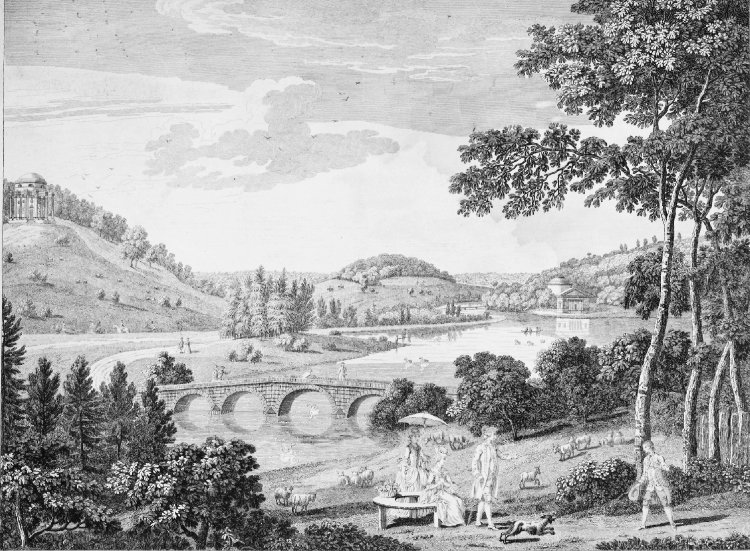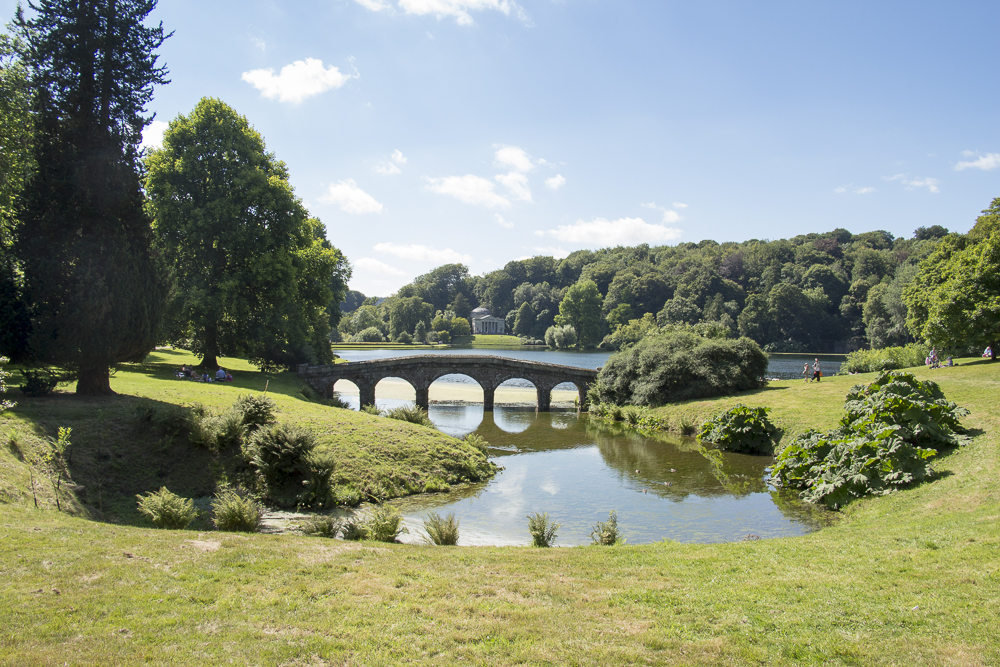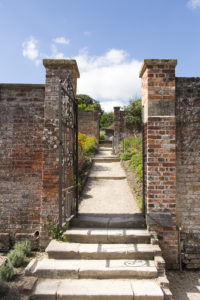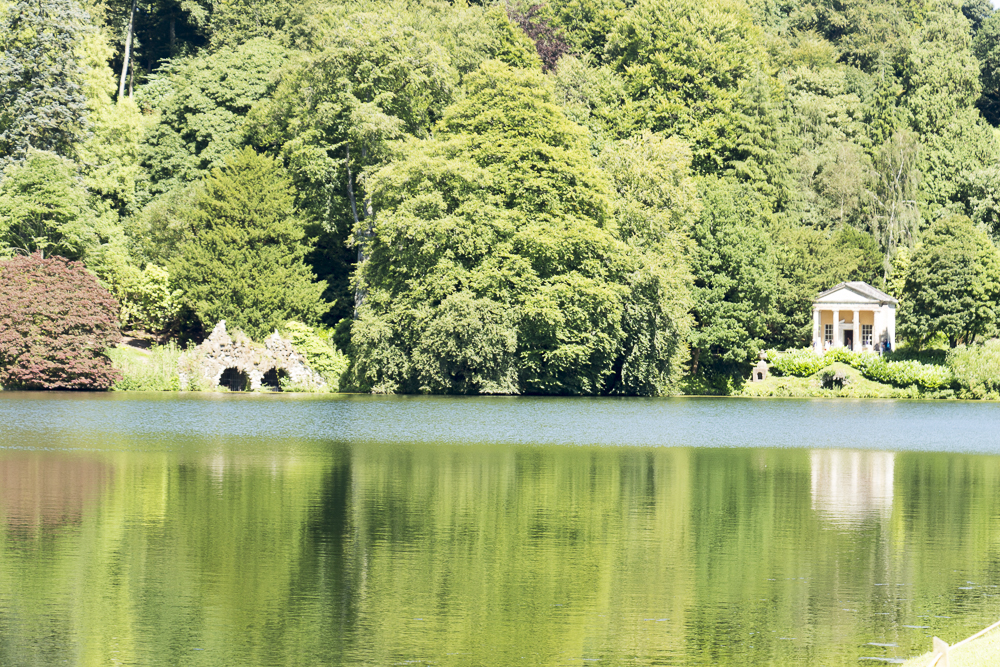Stourhead is probably one of the most attractive gardens in England and comes as close to the idea of the Elysian Fields as any garden I have visited. The garden was in the main part created between 1719 and 1772, but some work on its development continued until 1840. There is in practice two areas of the garden one around the house and the main garden situated in the valley next to the house; neither of which can be seen from the other.
Adjacent to the house is a small area of garden and amounts to very little. I would imagine it would have provided a sheltered area to sit out in if you lacked the time or inclination to make your way down to the main garden which is quite a walk and not visible from the house. About 200 metres south is the walled vegetable garden which has now largely been re-purposed as an ornamental garden, but with a several greenhouses in place and the beds filled with large blocks of plants. Parts are quite attractive, but it somehow lacks purpose. It is as though they felt they need to do something with it once it was no longer going to be used for its original purpose of supplying the house with fruit and vegetables so, it was decided to fill it with the sort of bright flowers that would never have been envisaged in the main garden. There is a strong sense of missed opportunity here and I’m sure with a little imagination a lot more could be done with this area.
The main garden is really a separate entity in its own right; with neither a view of it from the house or a direct path from the house to it. It is rather as though Henry Hoare walked down the road from his front gate, spotted a location with potential and decide he would build a garden there. This is not that unusual with gardens of this style as scale and land-form are so important to their design it was common for the garden to be placed some distance from the house. There is also important that whereas these days the garden is seen as an integral part of the house and an extension of it to the 18th century landscape garden the garden was a largely separate entity which told its own story of an idolised landscape.
The garden is dominated by the large man-made lake, the result of damming the south-west end of valley, and the natural progression is to walk in an anti-clockwise direction around it; visiting the buildings as you go. These buildings show great variety and imagination, but also have been skilfully scaled and positioned to complement the landscape; never dominate it. They vary in style from a grotto to classical Greek temple-based designs and all overlook the lake from a variety of vantage points. This aspect of the garden has changed little from what the creators laid out, in a large part as the result of the creating family passing the estate directly over to the National Trust in 1946. The same cannot be said of the planting which has changed considerably since the 18th century.

Fortunately, the landowner, garden designer and artist Coplestone Warre Bampfylde (1720 -1791) visited the garden and made several studies of the garden which survive. From these the planting was far more open with greater areas of grass. For example, Apollo’s Temple is now hidden by the trees which stretch up to it from the lake. Bampfylde’s studies show that back in the 18th century it stood at the top of a grass slope running all the way down to the lake giving it a radically different setting. It is clear that the garden has far more planting and a greater range of plants that was originally envisaged. It is unlikely the National Trust would ever attempt to revert the gardens to the planting of 1800 but I feel there is a lot of scope for thinning of what’s there to re-establish some of the balance between water, grass trees and buildings.
This balance and the careful arrangement of the elements has led to people seeking a deeper meaning in the layout of Stourhead than there is. It was simply set out to make the most of the available landscape to create a Greek heaven on earth. The irony is that sitting by the lake on a warm summers day you feel they created an English heaven on earth.






